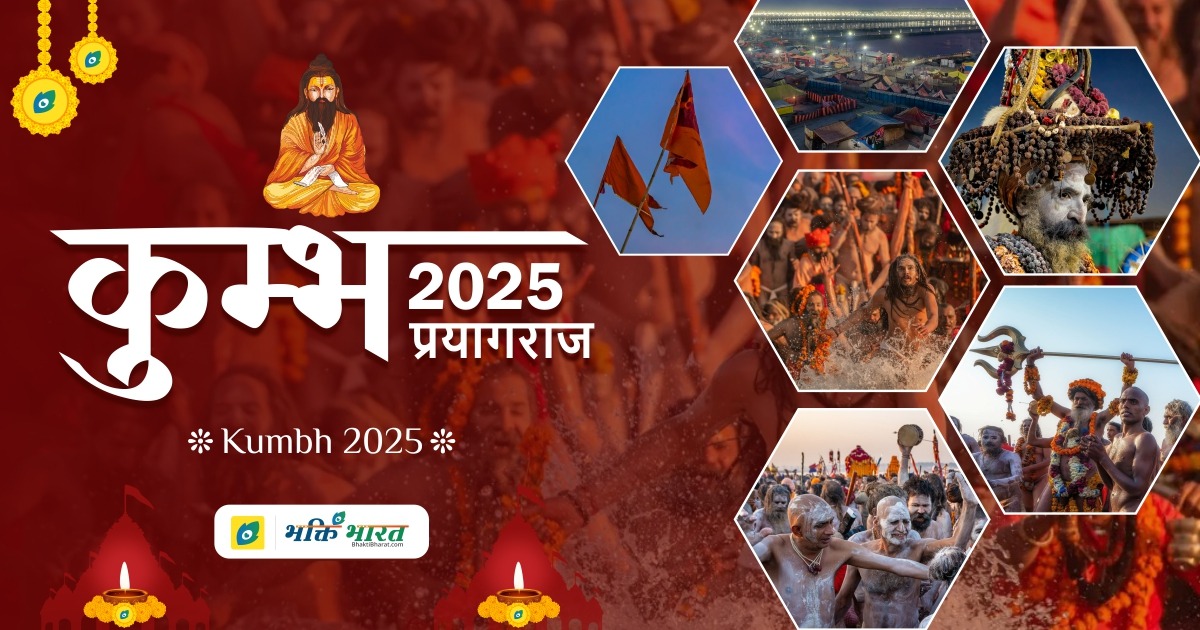

Maha Kumbh Mela is the most sacred pilgrimage among Hindu pilgrimages. This festival is celebrated in Prayagraj with an interval of twelve years.
During the churning of the sea, a ghada full of Amrit also emerged. There was a struggle for Amrit between the bhagwan and the rakshas. At the command of Devraj Indra, when his son Jayant was trying to run away with Amrit Kumbh, some rakshas followed him. The struggle for Amrit-Kumbh continued for twelve days in heaven and a few drops of Amrit fell at four places from that Kumbh. These places were Haridwar, Prayag, Ujjain and Nashik on earth. The holy rivers of these places got credit for receiving drops of Amrit.
Kumbh is held in each place equally after twelve years. The count of heaven for the Amrit-Kumbh led to a struggle for twelve days, which is the same as twelve years for the people of the earth. Different nakshtra and dates of Kumbh festival are fixed in each place.
The ghada is also called Kumbh, so the huge spiritual ceremony of these Amrit-derived places came to be known as Kumbh.
Types of Kumbh Mela:
❀ The occurrence of this festival is based on the position of Sun, Moon and Jupiter as per Hindu astrology.
❀ The Allahabad Kumbh Mela is organized when Jupiter is in Aries or Taurus and the Sun and Moon are in Capricorn during the Hindu month of Magha, the January–February period.
❀ The Haridwar Kumbh Mela takes place when Jupiter is in Aquarius and the Sun is in Aries during the Hindu month of Chaitra during the March–April period.
❀ The Ujjain Kumbh Mela takes place when Jupiter is in Leo and the Sun is in Aries, or when all three are in Libra during the Hindu month of Vaishakh, around the April–May period.
❀ The Nashik Kumbh Mela takes place when the Sun and Jupiter are in Leo during the Hindu month of Bhadrapada around the August-September period.
Mythology Behind Kumbh Mela:
According to Hindu mythology, Amrit, believed to be the potion of immortality, was created during the churning of the ocean. Lord Brahma, the divine creator, instructed the deities to churn the nectar with the help of the asuras. When the Asuras came to know about the plan of the Devas without sharing it with them, they chased the Devas for twelve days. The four sites of the Kumbh Mela are believed to be the places where drops of nectar fell from that Kumbh while it was carried by a deva to save it from the hands of the asuras. Four drops fell at Prayag, Haridwar, Nashik and Ujjain, giving these places mystical properties. Four sacred rivers flow through these areas, which form the site of bathing rituals.
It is believed that during the dates of the Kumbh Mela, the waters of the Sangam turn into nectar, which has divine properties that help pilgrims attain salvation.
| Related Name | Allahabad Ardh Kumbh Mela, Allahabad Kumbh Mela, Kumbh Mela, Triveni Sangam |
| Begins Tithi | Makar Sankranti |
| Celebrations | Daan, Bathing on River |


 Follow Bhakti Bharat Whatsapp Channel »
Follow Bhakti Bharat Whatsapp Channel »** Please write your any type of feedback or suggestion(s) on our contact us page. Whatever you think, (+) or (-) doesn't metter!
